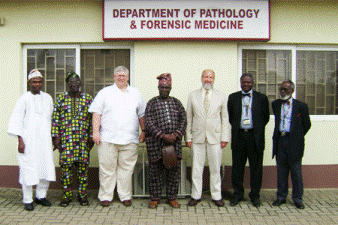Natural Resources, School of
Date of this Version
2010
Document Type
Article
Citation
Mem Inst Oswaldo Cruz, Rio de Janeiro, Vol. 105(1): 66-72, February 2010.
Abstract
Current clinical data show a clear relationship between the zoonosis rates of Diphyllobothrium pacificum and Anisakis caused by the El Niño Southern Oscillations (ENSO) phenomenon along the Chilean coast. These parasites are endemic to the region and have a specific habitat distribution. D. pacificum prefers the warmer waters in the northern coast, while Anisakis prefers the colder waters of Southern Chile. The ENSO phenomenon causes a drastic inversion in the seawater temperatures in this region, modifying both the cool nutrient-rich seawater and the local ecology. This causes a latitudinal shift in marine parasite distribution and prevalence, as well as drastic environmental changes. The abundance of human mummies and archaeological coastal sites in the Atacama Desert provides an excellent model to test the ENSO impact on antiquity. We review the clinical and archaeological literature debating to what extent these parasites affected the health of the Chinchorros, the earliest settlers of this region. We hypothesise the Chinchorro and their descendants were affected by this natural and cyclical ENSO phenomenon and should therefore present fluctuating rates of D. pacificum and Anisakis infestations.


Comments
Copyright 2009. Used by permission.